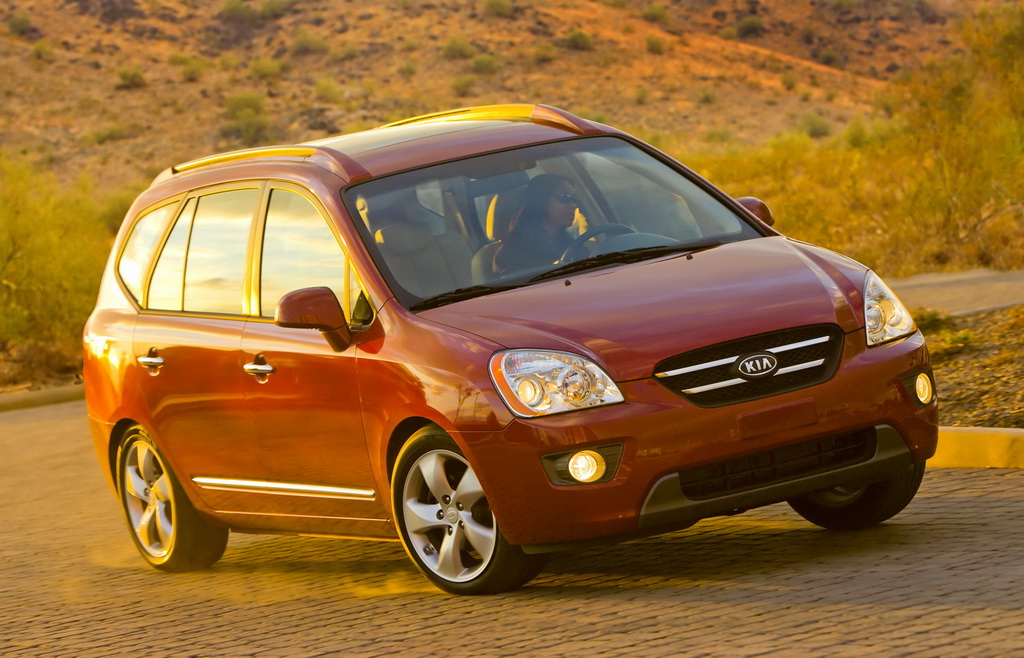2009 Kia Rondo Review - Androgyny meets Practicality
Posted by mr bill | Posted in | Posted on 5:58:00 AM
0

Blings:
- Seven passenger seating
- Outstanding value
- Super practical
Dings:
- Hit with the ugly stick ten too many times
- Gutless V6
- Low-hanging tailgate devours foreheads
Ruling: Comfortable and practical, but as sexy as a pair of orthopedic shoes.
When the lowly Hyundai Excel launched back in the mid 1980’s, it set the reputation for Korean-built cars in the United States. A reputation tied to words like crap, junk, deathtrap and “is that all you could afford?”. They did what every future successful manufacturer did; they came in at the bottom of the market with a product priced so low that they were bound to gain some market share. And of course, by having one of the lowest-priced cars available in the Excel, paired with the simultaneous move of Japanese manufacturers into the higher-priced segment, Hyundai carved out a slice of the automotive pie for themselves. It may have been the crusty, moldy, stale part, but a slice nonetheless.
But like the Japanese before them, my how far the Korean reputation has come in such a short time. Just look at Kia, a company that went from making steel tubing for bicycles in the 1950’s to South Korea’s second largest auto manufacturer. Now a part of Hyundai, Kia has been steadily building its reputation as a quality Asian automotive brand. No doubt the 10 year/100,000 mile warranty brainchild paid off in spades for both makes, selling hundreds of thousands more cars, generating the necessary cash flow they needed to improve quality and reliability, and build cars like the Rondo.

First Impressions
When you first look at the Rondo, it’s hard to decipher exactly what it is. It has the apparent dimensions and front-wheel-drive powertrain of a compact car, seven-passenger seating capacity of a minivan, and the headroom, cargo space and fold-flat storage of a crossover utility vehicle (CUV). Although the Rondo seems to defy classification with it’s versatility, there’s a growing number of cars which are similar.
The Rondo competes closely with makes like the
Performance
The Rondo is available with either a four or six-cylinder powerplant. Our tester came equipped with the six, which we found to be completely lacking in punch. The 2.7 liter V6, which gets 18 city/26 freeway, only puts out 192 horsepower under full motivation, hardly offsetting the 110 pounds of weight penalty over the four-cylinder. On the freeway, the V6 could hardly muster enough power to overtake 18-wheelers on those precarious two lane stretches, and the racket it made at full-throttle wasn’t confidence inspiring.
Further, the erratic five-speed automatic transmission frantically shifted back and forth like a plate spinner in an earthquake. Shifting and power delivery wasn’t smooth with the V6. We might as well have been driving a four-cylinder, because that’s exactly what the V6 sounded and felt like. So save yourself a few extra mpgs and a thousand bucks, and stick with the 2.4 liter four-banger which puts out a respectable 167 horsepower.
The Rondo really doesn’t get your spirited driving mojo going, but on the backroads, for a seven passenger vehicle, it handled far better than say, a minivan, so that’s good. On the freeway, which we spent nearly 500 miles driving, the Rondo’s upright seating position was comfortable, and road noise was minimal.

Build
An area where Korean cars previously always fell apart, literally and figuratively, has been in build quality. It seems Kia has recognized this historical shortfall, because the Rondo is really put together well. The plastics are of Honda quality, rattles and squeaks cannot be heard, and the doors open and close with that precise exactitude of a Toyota.
Source:http://reviews.carreview.com










